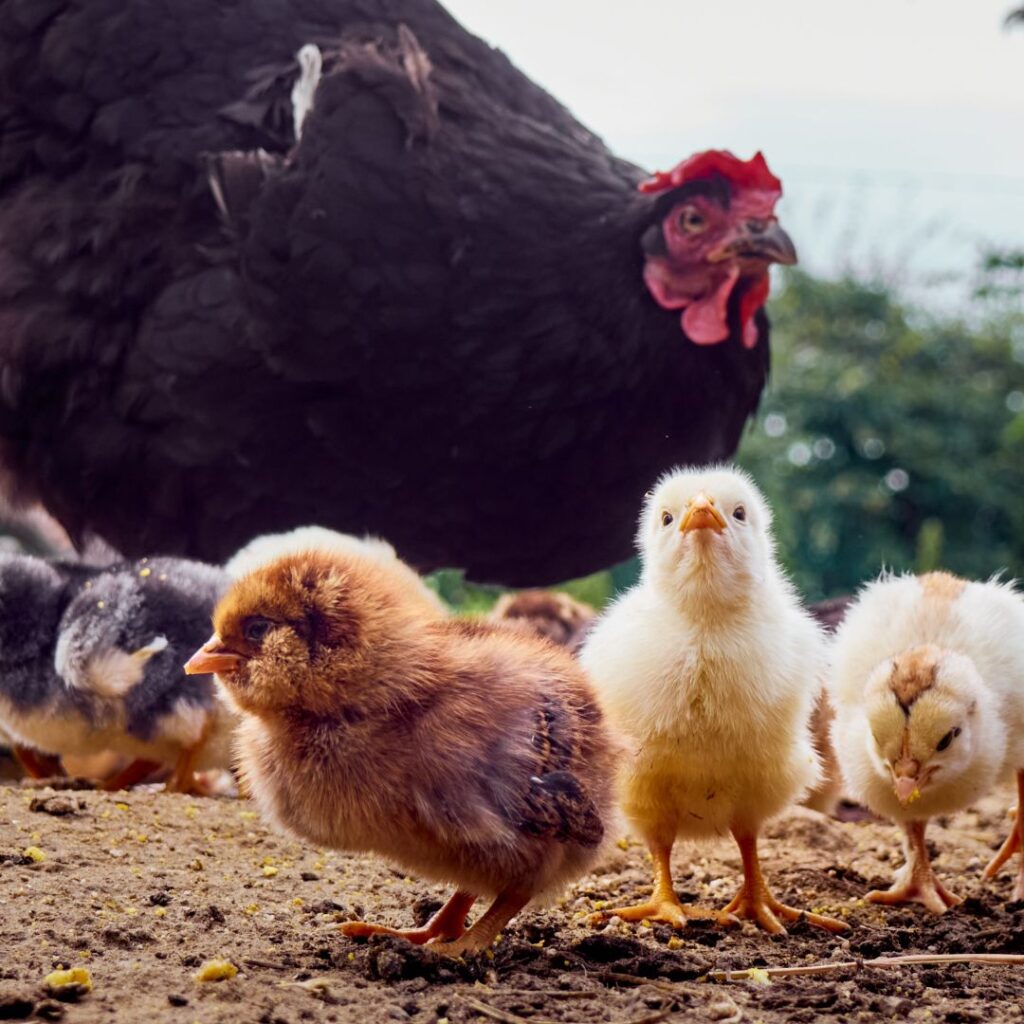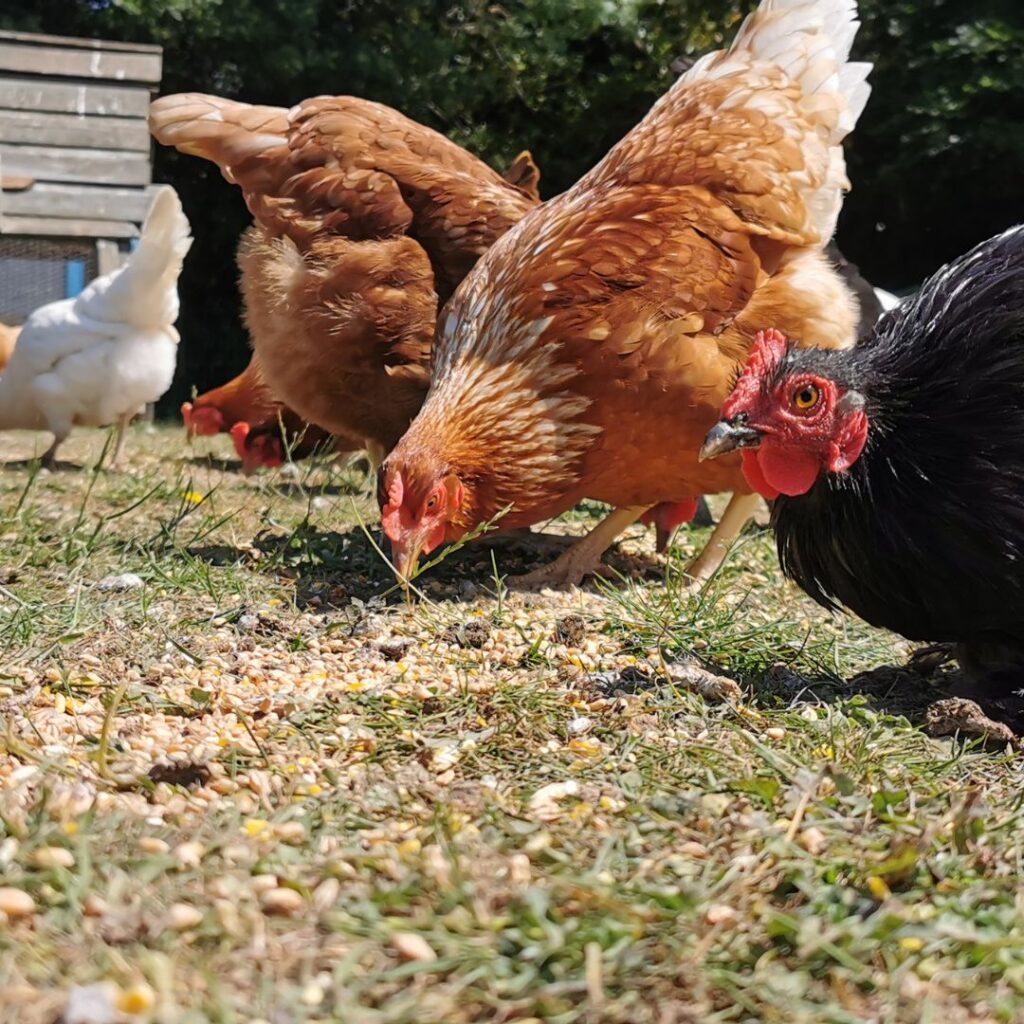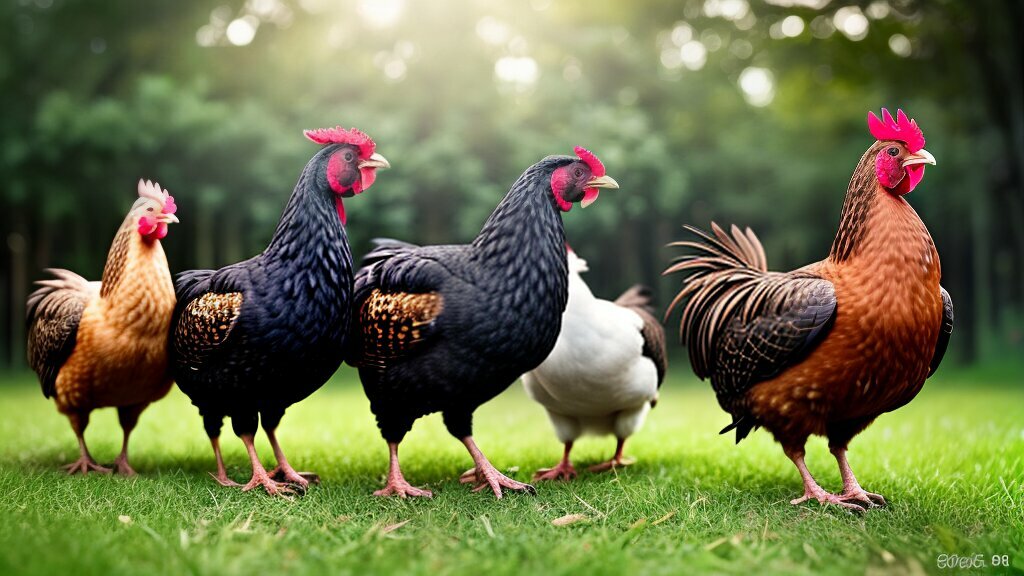Are you a backyard chicken keeper looking for new ways to diversify your flock’s diet while providing them with essential nutrients? Have you ever wondered, “will chickens eat radishes?” If so, you’re in the right place! This comprehensive guide for 2023 will explore the relationship between chickens and radishes, from their benefits to potential risks and precautions.
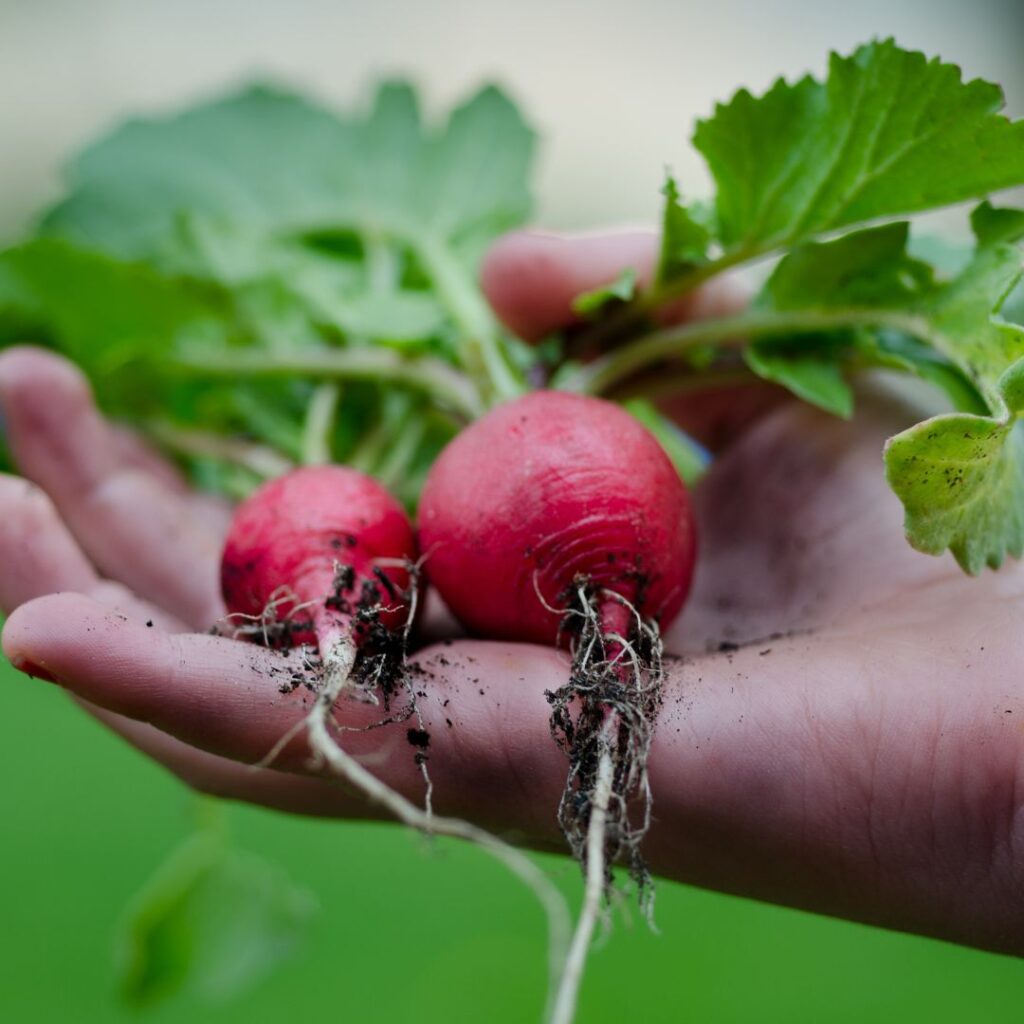
In this blog post, we’ll discuss the different parts of the radish that chickens can consume, the types of radishes suitable for chickens, and the health benefits they provide when chickens eat radishes. We’ll also cover how to properly feed radishes to your flock, as well as the potential risks and precautions associated with radish consumption. So let’s dive in and discover if chickens can enjoy the crunchy and nutritious root vegetable, the radish!
Short Summary
- Chickens can safely eat radishes and their associated parts, but moderation is important.
- Radish greens/leaves, seeds/sprouts provide essential nutrients to chickens in both raw & cooked forms.
- Moderation when feeding radishes to chickens is key for health benefits such as vitamins, minerals & hydration without potential risks like pesticide contamination or harmful ingredients.
Will Chickens Eat Radishes?

Good news for those looking to add variety to their flock’s diet: chickens can safely eat radishes! In fact, they can consume all parts of the radish, including the leaves, stems, seeds, and roots. Not only do chickens eat radish greens, but they can also eat radish seeds and sprouts, offering additional nutritional benefits. And yes, chickens eat radish leaves, which can be eaten raw or cooked. Moreover, chickens eat radish stems, making no part of the radish go to waste.
It’s important to remember that radishes should not make up more than 10% of a chicken’s diet and should be considered a supplementary source of nutrition. Additionally, monitoring your chickens’ radish consumption is essential to prevent overfeeding and potential stomach upset. So, while radishes can be a healthy treat for your chickens, moderation is key.
Radish Greens and Leaves
Radish greens and leaves are not only safe for chickens to consume but they are also packed with nutrients. They are rich in vitamins A, B6, and C, along with essential minerals such as iron, calcium, and magnesium. With such an exceptional nutritional profile, it’s no wonder chickens enjoy foraging for these tasty greens!
However, it’s important to note that radish greens can taste bitter, which may not appeal to all chickens. To accommodate the varying tastes of your flock, consider offering both raw and cooked radish greens, as cooking can help reduce their bitterness. Some chickens may even prefer to eat radish greens when they are cooked. Keep your chickens away from the radish plants. They are prone to damage them.
Radish Seeds and Sprouts
Chickens can also enjoy the seeds and sprouts of the radish plant, and it’s not uncommon to see chickens eat radish seeds as well as chickens eat radish sprouts. However, it’s important to monitor their consumption, especially if you’re growing radishes in your garden, as chickens can quickly destroy potential gardens by foraging for these tasty seeds. So, if you want to eat radish sprouts yourself, make sure to protect your garden from the chickens who also love to feast on radish sprouts.
When offering radish seeds to your chickens, it’s best to feed them sprouted seeds rather than raw ones, as sprouted seeds offer enhanced nutritional benefits. Sprouting or microgreens provides nutrition to sprouted seeds, and chickens can benefit from these nutritious seedlings.
Raw vs. Cooked Radishes

Whether to feed your chickens raw or cooked radishes is ultimately a matter of personal preference and what works best for your flock. Both raw and cooked radishes can provide essential nutrients to your chickens, but cooking them may make them more palatable and easier to digest.
On the other hand, offering your chickens raw radishes can provide them with a crunchy and enjoyable treat. If you opt for raw radishes, it’s a good idea to chop or grate large radishes before feeding them to your chickens, as this will make it easier for them to pick them up with their beak and mix them with other food.
Whatever option you choose, your chickens will benefit from adding radishes to their diet.
Types of Radishes Suitable for Chickens

With so many types of radishes available, knowing which ones are suitable for your chickens is important. In this section, we’ll explore four popular varieties of radishes that can safely be added to your flock’s diet: Daikon, Watermelon, Red, and Black radishes.
Each type has unique taste, appearance, and nutritional benefits that can contribute to your chicken’s overall health.
Daikon Radish
The Daikon radish, known for its mild flavor and popularity in Japanese cuisine, is a fantastic choice for your chickens. Daikon radishes are highly nutritious, providing a great source of minerals and vitamins for your flock. Plus, the Daikon radish leaves are also beneficial, making it an excellent choice for both the root and the greens.
When feeding Daikon radishes to your chickens, preparing and serving them in moderation and frequency is essential, as with any other type of radish. Doing so ensures that your chickens receive the necessary vitamins and minerals from this nutritious vegetable.
Watermelon Radish
The watermelon radish is another excellent option for your chickens. Its unique appearance, with green skin and pink flesh resembling watermelons, sets it apart from other radishes. However, its taste is quite different from watermelons, offering a unique flavor profile for your flock.
Watermelon radishes are an excellent source of vitamins and minerals, containing high levels of vitamins A, C, K, and B6 and providing hydration and dietary fiber. They can be fed to chickens raw or in a salad, making them a versatile addition to your flock’s diet.
Red Radish
Red radishes, one of the popular root vegetables, with their vibrant red exterior and crisp white interior, are another nutritious option for your chickens, just like sweet potatoes. They provide juicy white flesh packed with essential vitamins and minerals.
Red radishes are readily available in most stores, making them a convenient choice for adding variety to your chickens’ diet. Just feed them in moderation, as with any other radish, to ensure your flock receives the necessary nutrients without overloading on any single food source.
Black Radish
Black radishes offer a unique taste and appearance, providing additional variety for your flock. Their earthy, slightly bitter, spicy, and pungent flavor is more intense than other radish varieties, especially when consumed raw.
Despite their strong flavor, black radishes are packed with vitamins and minerals, making them a highly nutritious option for your chickens. Just like with other radish types, remember to feed black radishes in moderation, ensuring your chickens receive a balanced diet with all the necessary nutrients.
Health Benefits of Radishes for Chickens

As previously discussed, radishes provide chickens with essential vitamins, minerals, hydration, and antioxidants. These nutrients contribute to their overall health and well-being, helping to maintain their kidney and respiratory functions, support their immune system, and promote blood flow.
In addition to these health benefits, the high water content in radishes helps keep chickens hydrated. Proper hydration is crucial for chickens, as it aids in digestion, nutrient absorption, and body temperature regulation. Sufficient water intake is vital for their well-being and egg production.
With all these advantages, it’s no wonder that adding radishes and radish leaves to your flock’s diet can be a wise choice.
Vitamins and Minerals
Radishes are rich in vitamins and minerals essential for your chickens’ health. They contain vitamin C, folate, zinc, potassium, phosphorus, manganese, magnesium, iron, and calcium. These vitamins and minerals play crucial roles in various bodily functions, such as enhancing the immune system (vitamin C), supporting cell growth and development (folate), facilitating wound healing (zinc), and regulating blood pressure (potassium).
To ensure that your chickens receive the necessary vitamins and minerals from radishes, providing them with a varied diet that includes radishes in moderation and regularly is crucial. This balanced approach will help your chickens maintain optimal health and support their overall well-being.
Hydration and Antioxidants
Radishes are not only a great source of vitamins and minerals, but they also help keep your chickens hydrated. With a water content of 95% by weight, radishes can assist chickens in staying hydrated on hot, dry days. Proper hydration is essential for chickens, as it helps with digestion, nutrient absorption, and body temperature regulation.
In addition to hydration, radishes contain antioxidants that help strengthen the immune system of chickens. These antioxidants contribute to the maintenance of their kidney and respiratory functions, making radishes a valuable addition to your flock’s diet.
Source: Health and Nutritional Benefits of Radishes
How to Feed Radishes to Chickens

Feeding radishes to chickens involves proper preparation, serving, and moderation to ensure their health and well-being. It’s important to wash store-bought radishes thoroughly to remove any pesticides or contaminants before feeding them to your flock. Additionally, radishes should not be prepared with ingredients such as salt, sugar, butter, or oil, as these can harm their health.
When serving radishes to your chickens, they can be offered raw, cooked, or even grated to make it easier for them to pick up with their beak and mix with other food. Just remember to follow the 90/10 rule, where radishes make up no more than 10% of their diet, with the remaining 90% consisting of a balanced diet of grains, fruits, vegetables, and other foods.
Preparing and Serving Radishes
To prepare radishes for your chickens, wash them thoroughly to remove any pesticide residue or contaminants. Then remove any potentially harmful ingredients before chopping or grating the radishes for easier consumption. If you want your chickens to eat cooked radishes, simply cook them after washing and removing harmful ingredients, and then chop or grate for serving.
When serving radishes to your chickens, you can offer them raw, cooked, or even grated, depending on what works best for your flock. By providing radishes in different forms, you can accommodate your chickens’ varying tastes and preferences, ensuring they receive the necessary nutrients and enjoy their food.
Moderation and Frequency
Feeding radishes to your chickens in moderation is essential to maintain a balanced diet and avoid potential issues. Following the 90/10 rule, as mentioned earlier, will ensure your chickens receive the necessary nutrients without overloading on any single food source.
To prevent potential digestive issues due to the high fiber content in radishes, it’s crucial to monitor your chickens’ consumption and adjust their diet accordingly. Providing a balanced diet that includes radishes in moderation supports your flock’s overall health and well-being.
Potential Risks and Precautions
When feeding radishes to chickens, it’s important to be aware of potential risks and precautions. These include pesticides, harmful ingredients, and age restrictions for chicks. By considering these factors, you can ensure that your chickens enjoy the benefits of radishes without any adverse effects.
Being mindful of these potential risks and taking the necessary precautions will help you provide your chickens a safe and nutritious treat. In the following subsections, we’ll delve deeper into the potential risks and precautions associated with radish consumption for chickens.
Pesticides and Contaminants
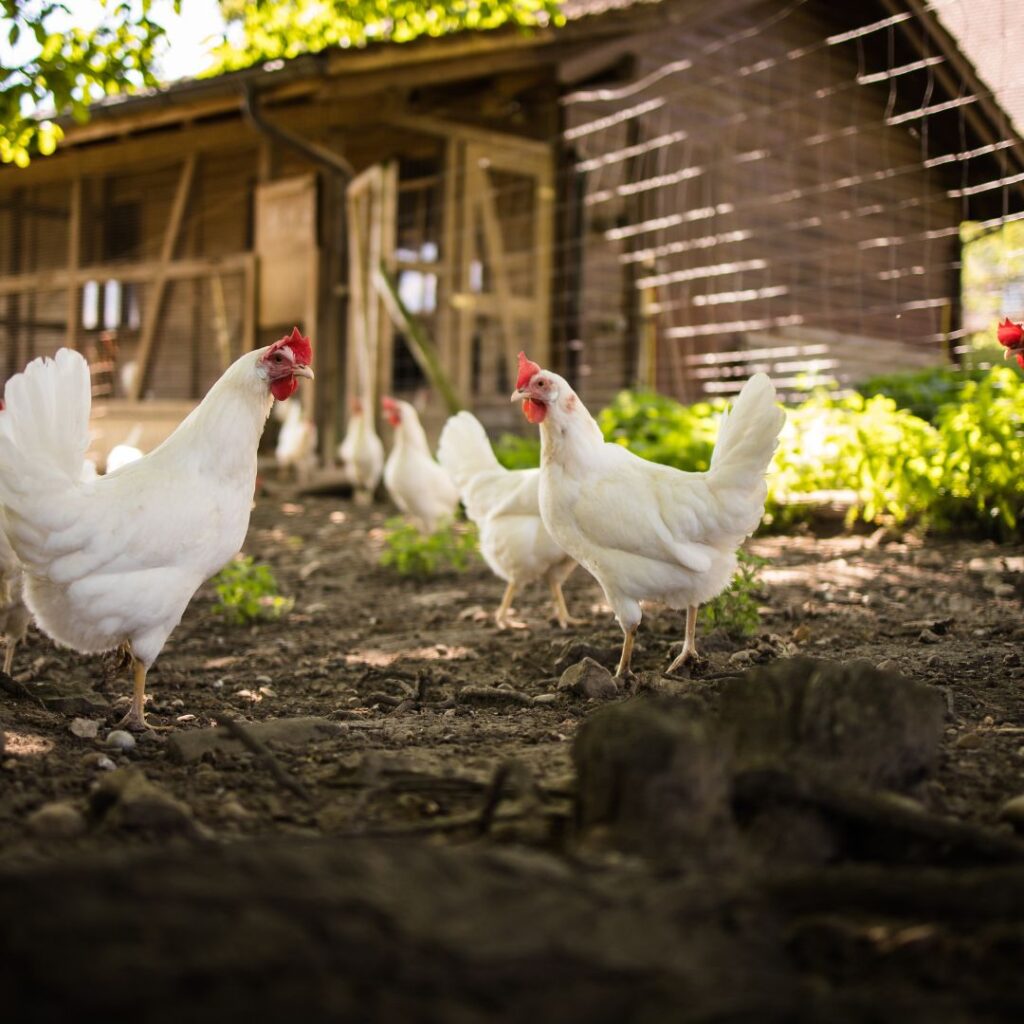
It’s essential to wash store-bought radishes thoroughly to remove any pesticides or contaminants before feeding them to your flock. Radishes may contain pesticide residues such as thiamethoxam, as well as contaminants of emerging concern, including organochlorine pesticides and polychlorinated biphenyls. Additionally, radishes can accumulate heavy metals such as arsenic, cadmium, copper, and lead if grown in contaminated soils.
To minimize the risk of contamination for radishes intended for feeding to poultry, it’s recommended to select radishes from reliable sources and avoid those grown in contaminated soils. You can protect their health and well-being by ensuring the cleanliness and safety of the radishes you feed your chickens.
Harmful Ingredients and Seasonings
When preparing radishes for your chickens, it’s important to avoid harmful ingredients and seasonings such as salt, sugar, butter, and oil. These ingredients can harm your chickens’ health and should be avoided when feeding radishes to your flock.
By serving radishes in their natural state, without any additional ingredients, you can ensure that your chickens receive the many benefits of radishes without any potential harm. This will help support their overall health and well-being.
Chicks and Radish Consumption
It’s important to note that chicks should not consume radishes until they are at least three weeks old, and even then, only in small, cooked portions to supplement their regular feed. This is because chicks have different nutritional needs and may not be able to digest radishes at such a young age properly.
By waiting until your chicks are old enough and providing them with small, cooked portions of radishes, you can ensure they receive the benefits without any potential digestive issues. This will help support their growth and development while maintaining their overall health.
A-Z Guide on What Chickens Can Eat
Summary
In conclusion, radishes can be a nutritious and beneficial addition to your chickens’ diet, providing essential vitamins, minerals, hydration, and antioxidants. By offering various types of radishes, such as Daikon, Watermelon, Red, and Black radishes, you can add variety and promote overall health for your flock.
Remember to feed radishes in moderation, following the 90/10 rule, and monitor their consumption to avoid potential issues. By doing so, you can ensure that your chickens receive the necessary nutrients and enjoy their food while maintaining their overall health and well-being.
Frequently Asked Questions
Can chickens eat radishes raw?
Yes, chickens can eat radishes raw – the whole radish is edible as a healthy treat your chickens will love. Every part of a radish is safe for them to consume, including the flesh, stem, seeds, and leaves.
You can serve it to them either raw or cooked.
What vegetables should chickens not eat?
Chickens should not be fed leafy vegetation from tomatoes, peppers, or potato peelings, as they can contain dangerous toxins. These toxins can cause digestive issues, respiratory problems, and even death. It is important only to feed chickens food that is safe and nutritious for them. This includes grains, vegetables, and fruits free from toxins and pesticides.
Will chickens eat raw parsnips?
Yes, chickens can eat raw parsnips, but they prefer them to be grated or chopped. Parsnips are a nutritious food source related to carrots and parsley that can be fed raw or cooked.
Can chickens eat the entire radish plant?
Chickens can safely eat all radishes, including leaves, stems, seeds, and roots.
Are all types of radishes suitable for chickens?
Yes, popular varieties such as Daikon, Watermelon, Red, and Black radishes are all suitable for chickens.

